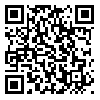BibTeX | RIS | EndNote | Medlars | ProCite | Reference Manager | RefWorks
Send citation to:
URL: http://ijce.iust.ac.ir/article-1-479-en.html
Strut-and-Tie Model (STM) can be used to model the flow of compression within a concrete strut. Concrete struts are formed
in various shapes such as prismatic or bottle-shaped. In order to study the behavior of concrete struts, a series of simple tests
were performed. Eighteen reinforced concrete isolated struts with compressive strength of 65 MPa were tested up failure under
point loading in the plane of specimens. The tested specimens were reinforced by various reinforcement layouts. The behavior
of tested beams was investigated. Observations were made on transverse displacement, primary cracking and ultimate failure
load and distribution of strain on the face of tested panels. Based on these observations, the geometry of the concrete struts was
examined. a new model to analysis of concrete struts was proposed based on modified compression field theory (MCFT). A
database of 44 tested specimens was compiled to evaluate the proposed model. The results indicate that using the ACI and CSA
codes expressions regarding the amount of minimum required reinforcement in a strut produces conservative but erratic results
when compared with the test data. Conversely, the new proposed model presents a more accurate prediction for the strength of
44 tested struts.
| Rights and permissions | |
 |
This work is licensed under a Creative Commons Attribution-NonCommercial 4.0 International License. |





